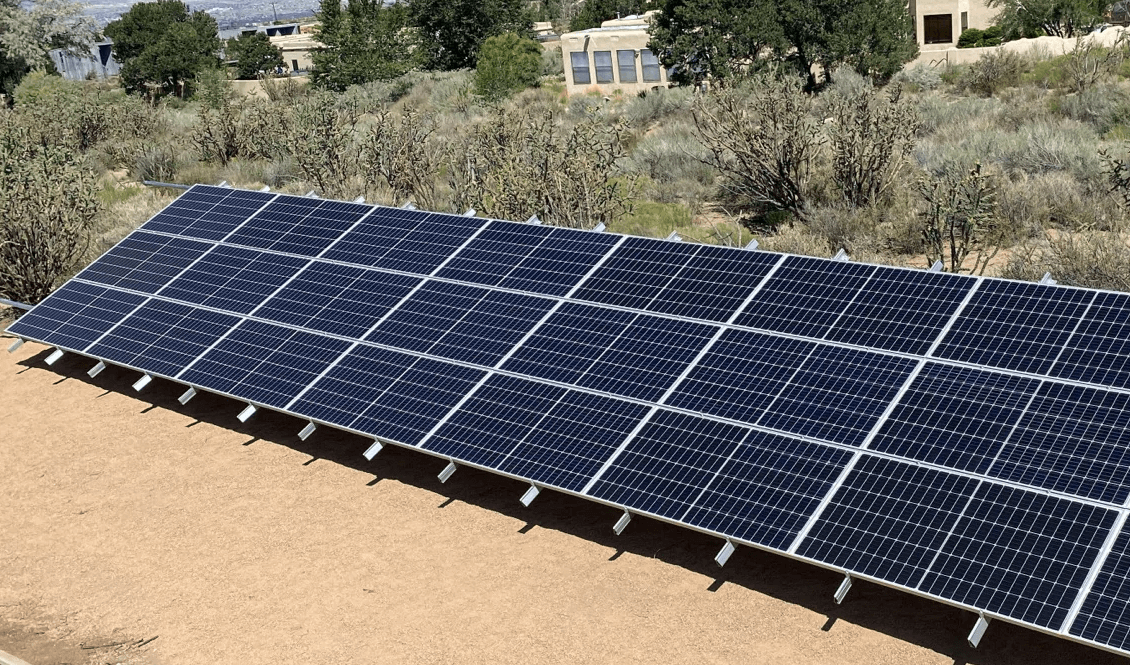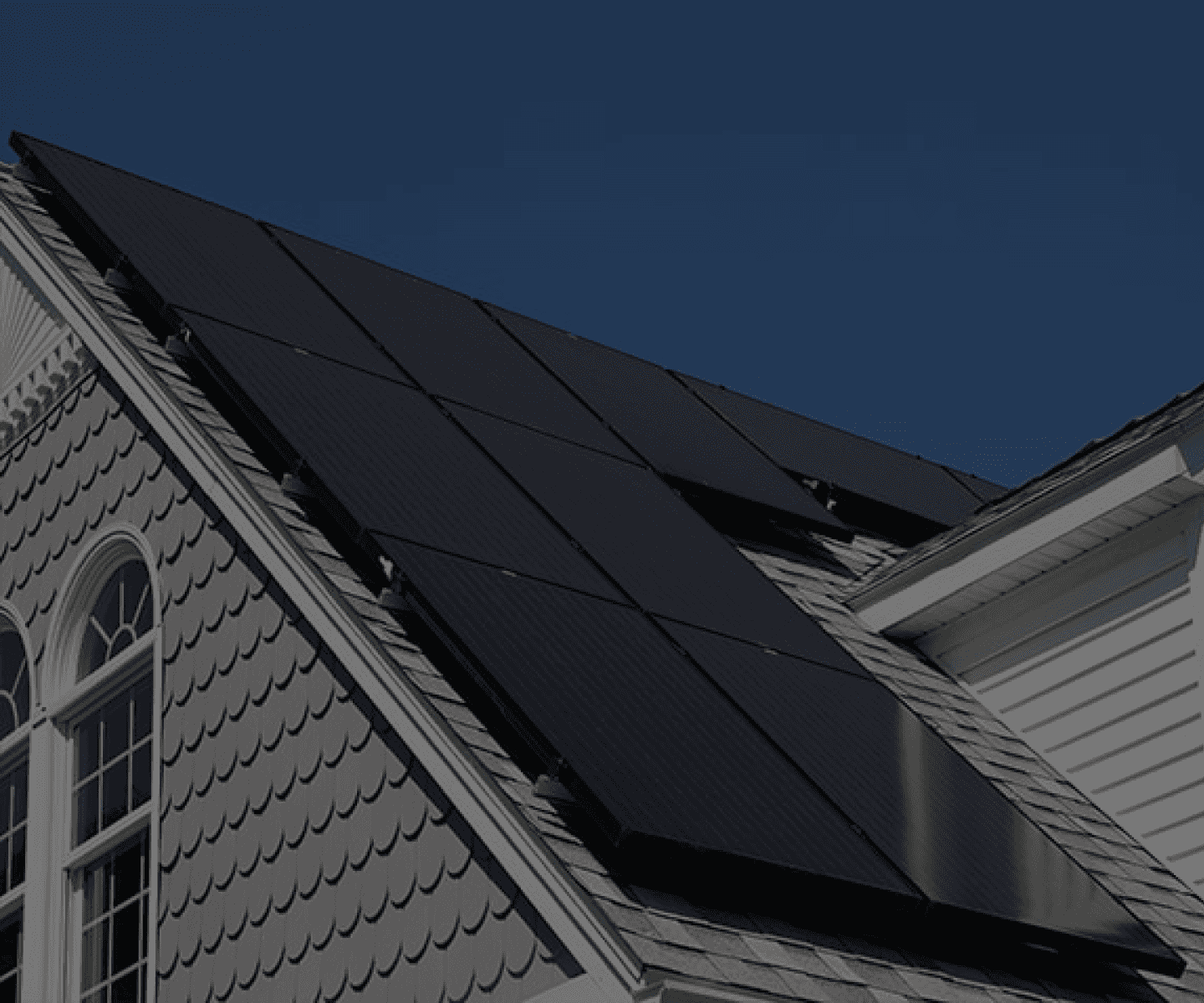What Permits Do I Need to Install Solar Panels?

Guest post by Big Living | Little Footprint
If you’re planning a DIY solar panel installation, prepare for a comprehensive paperwork and permitting process. Installing solar panels requires construction and electrical work, so your local government and utility company must ensure your system meets building code and electrical codes before installation.
For DIY-ers, the solar panel approval process can seem daunting and confusing. We know this because we are DIY-ers that did our entire installation — including the permitting process — ourselves. But don’t worry! In this article, we’ll cover the basics of solar permitting, including tips on how we worked with GoGreenSolar to get through the solar panel approval process quickly.
To learn more about our DIY solar panel journey and other tips, check out the Going Solar Series on Big Living | Little Footprint
Solar Panel Approval
Before you install solar panels, you need to get approval from any Authority Having Jurisdiction (AHJ) that may be responsible for overseeing the work:
- Your local planning or building department, which could refer to your city or county
- Your utility company
- Your Homeowner’s Association (HOA), if you have one.
Each entity requires solar panel approval for different reasons.
The local building department enforces municipality, county or city regulations designed to protect residents and ensure safety protocols. However, in some rare cases, a solar panel permit is not required by the municipality. This typically occurs when the solar panel install location is outside city limits in very rural areas. Check your local municipal building code or call the appropriate code office to confirm.
The utility company will need to approve your system because it connects to their grid and needs to meet all code and safety requirements. They’ll typically review your electrical wiring diagram and require an inspection before you can turn the system on.
Lastly, if you live in a community with an HOA, check with them as well. HOAs oversee neighborhood aesthetics and protect owners’ property values, which is why they require approval of solar panels. Believe it or not, some HOAs still don’t allow solar panels at all. So be sure to look at your HOA bylaws and verify with them before proceeding with solar panels.

What Permits Do I Need to Install Solar Panels?
We applied for three permits for our DIY installation: two electrical permits and one structural permit. We obtained a general electrical permit for the solar panel system, a second general electrical permit for upgrading our circuit breaker panel, and a structural permit to reinforce our roof’s rafters to support the additional weight of our panels.
The exact required permits will depend on your AHJ and their permitting process. Names of permits vary from one AHJ to another, so please refer to your appropriate AHJ. You’ll want to check their website for building permits related to solar panel systems. GoGreenSolar let us know that some AHJ’s do not allow DIY installation at all, so double-check before launching into your DIY journey.
Generally speaking, all grid-tied systems likely require a permit. Additional permits are needed to upgrade your circuit breaker panel (Main Service Panel) or reinforce your roof, like in our situation.
Many off-grid systems do not require a permit, and some off-grid DIY-ers choose not to get permits. However, some AHJs require permitting for off-grid systems, so be sure to check to stay in compliance.
We didn’t know what permits to apply for at the beginning of our DIY journey. We attempted to research on our own, but the process was confusing. We ended up calling our local permit office, and they told us exactly which permits we needed. So when in doubt, call your AHJ permit office and save yourself the hassle of understanding the convoluted city processes.
Solar Panel Building Permit
Our city does not require specific solar panel building permits; instead, it falls under general electrical permitting for existing single-family residences. Some AHJs require a separate solar panel building permit because panels can be considered a new structure, especially if the panels are ground mount.
Ensure you have all the necessary information and attachments required before submitting for permit review. Depending on the AHJ, you may need a homeowner’s affidavit, an engineering review, or other specifications about your specific system. Most AHJs will have either a checklist or website stating what you need to submit with each permit.
For example, we had to include an engineering report on the structural retrofit of our roof rafters. This report was signed by a licensed engineer confirming that reinforced roof rafters would be strong enough to hold the weight of the solar panels. Our city was simply looking for verification that our roof was designed correctly and safe for occupancy. We worked with GoGreenSolar to help prepare the necessary documentation here.
Solar Panel Electrical Permit
To clear a solar panel electrical permit, the AHJ will review the various electrical aspects related to your solar panel system, such as:
- Wire gauges
- Conduits sizing
- Voltage and amperages
We got help from GoGreenSolar to prepare specific electrical plans to submit for review and approval. So, we didn’t need to stress over this part of the process!
You’ll want to verify with your AHJ’s electrical checklist for all the necessary information before you submit this permit for review.
Occasionally, permit reviewers will have questions or revisions, but they aren’t complicated. If you purchase your solar panel kit from GoGreenSolar, you can always reach out to them for help with your response. Our city reviewers had a few questions for us, and with GoGreenSolar’s help, we quickly resubmitted our permits for fast approval.
Roof-Mount Panel Permits vs. Ground-Mount Panel Permits
Depending on your installation location, you may need to obtain different permits. A roof-mounted system is usually considered a modification to an existing structure, which means your city might see it as a retrofit or renovation permit. A ground-mount system is likely to be considered a new structure because it’s not attached to an existing structure.
Retrofit or renovation permits have different review and inspection processes compared to new structure permits. Make sure you’re completing the correct type of permit based on your solar panel system. Again, if you’re unsure, call your local permit office.

Solar Inspection Process
As part of the permitting process, solar panel systems typically require an inspection. Most AHJs require a post-installation inspection and sometimes require a pre-installation inspection.
For us, we did not have to complete a pre-installation inspection. But during this process, here’s what you can expect:
- Verify the integrity and structure of your roof
- Roof measurements taken to ensure the system will fit and identify roof obstructions
- Review attic truss layout and direction
- Review the circuit panel and electric meter to make sure it can handle the new solar panel system
- Verify proposed electrical conduit routing
After receiving your permit and installing your system, it’s time for the post-installation inspection. Here’s what you expect during this process:
- Proper grounding of electrical aspects
- Verify correct panel attachment
- Proper installation of rails
- Proper sizing of conduits
- Proper connection of wires
Incorrect installation of any major components will result in a failed inspection. For example, failing to install an electrical component properly could cause a fire. We worked with GoGreenSolar to obtain excellent installation and electrical instructions that helped us pass inspection with flying colors.
An inspection guarantees the safety of the solar panel system, yourself and others. A word of advice: do not take shortcuts, and complete your installation correctly the first time, so you don’t fail the inspection.
The inspector may recommend minor tweaks, but these won’t result in a failed inspection. For instance, we were told to place a placard showing the site layout near the disconnect switch. We didn’t know that this was a requirement, so we waited a few days for our placard to arrive, then scheduled a re-inspection for a final sign-off.

Learn more: How to Pass a Solar Inspection
How Long Does it Take to Get a Solar Permit?
Permitting time can vary greatly depending on the AHJ. The processing time varies due to how busy the office is, how complex the permit is, or if it’s online or physical submission. Don’t be afraid to call and ask about the expected timeline so you can plan accordingly.
For us, it took five days to receive the permits and approval to begin work. We were able to submit everything online, which made the review process more efficient. Moreover, we submitted early in the COVID-19 pandemic, and our city was not yet overwhelmed with permitting requests.
We spent a few weeks on the DIY installation. Then, it took another week to schedule inspections before final approval. End to end, the whole process took about one month. Your situation will vary depending on what approvals you need, how long your installation takes, and how long it takes to get an inspector to your site.
We couldn’t have completed the solar panel approval process without the help of GoGreenSolar. We loved working with them for our DIY installation!
Although you will be handling the permitting process yourself, GoGreenSolar can help you with all the planning paperwork, and answer any questions you have. Reach out to GoGreenSolar today if you’re interested in DIY solar!
-

About the authors: Amanda and Tyler Santoro are the creators of Big Living | Little Footprint, a site focused on helping people live a greener lifestyle. They are constantly doing DIY projects for their house like installing their own solar panels. They also focus on eco-parenting, making sustainable parenting choices and teaching their child to be eco-conscious. Their family strives to live big while still leaving a little footprint on their environment.
You can follow along with them on their journey and all their tips for improving your green living lifestyle.






